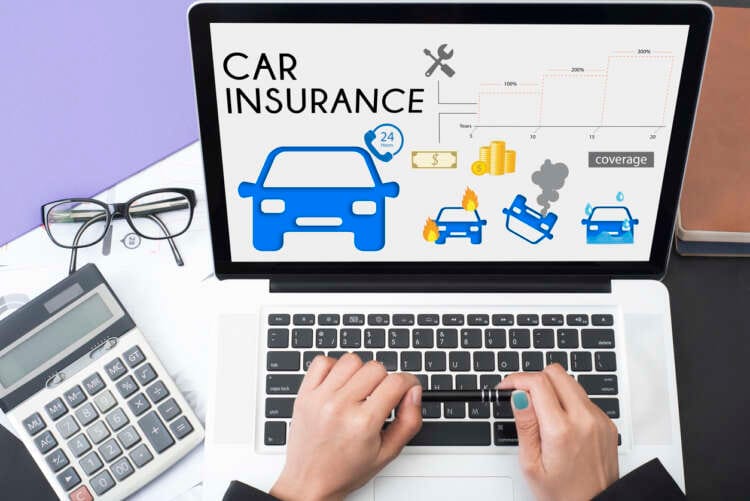
Technology has impacted a wide array of industries, and insurance is no exception. Anti-theft devices, dash cams, telematics, backup cameras, and other sophisticated on-board technology have, in some ways, made driving safer than ever — and that in turn could lead to drivers enjoying lower insurance premiums.
Let’s take a look at how InsurTech is helping to lower car insurance rates.
How Car Insurance Rates are Determined
First, it’s important to know how insurers determine premiums. At the most basic level, insurance is about risk. Because the company will be laying out the money for a claim — whether it’s injury, property damage, or both — they have to look at how likely it is a claim will be made. Some demographics are simply more of a risk than others in the eyes of insurers, and those people will end up paying higher premiums to soften the blow if an expensive claim gets made.
Some common factors car insurance companies use to determine premiums include:
- Accident history / driving record. Naturally, the more accidents on your driving record, the bigger a risk you’re considered to be.
- Age. Younger drivers pay the most in insurance premiums by far, and rates may also rise as you reach senior age.
- Annual mileage. The more you drive, the higher the risk of an accident… and vice-versa.
- Credit score. Having a low credit score can be a sign of financial irresponsibility and lead to higher premiums. However, this may be changing, as California has banned the use of credit scores when determining premiums. But that doesn’t mean it’s impossible to get cheap car insurance if you have poor credit. According to Kristine Lee at The Zebra, premiums for drivers with poor credit can vary widely depending on which car insurance company you go with.
- Location. Living in an area prone to crime, natural disasters or auto accidents will likely result in higher rates.
- Marital status / gender. Married drivers and drivers with families tend to drive more cautiously, which may lower their insurance premiums. Gender has traditionally been a factor, but is often considered outdated and discriminatory, and has also been banned in California…
- Vehicle type. Newer, more sophisticated cars cost more to repair, and will command higher annual premiums.
What is InsurTech?
Before we can fully understand how insurtech can help lower drivers’ car insurance premiums, we first have to understand what insurtech is.
Insurtech primarily refers to telematics devices, trackers, and other technology that collects data — usually in real time — and analyzes that data to determine the level of risk a driver represents, and adjusting the premium accordingly. For example, a tracker placed inside a car could collect data on braking, cornering, acceleration, speed, mileage, driving habits, and more. It could even assess risk when the car is in the garage doing nothing — after all, the less a car is driven, the lower the chance of an accident. This means premiums could be changed dynamically based on metrics and analysis of granular driver data.
How InsurTech Can Help Lower Car Insurance Rates
Although telematics and tracking devices are a major part of determining car insurance premiums, they’re far from the only technology. Other examples of insurtech include:
- Predictive analytics that can help insurers more reliably predict the probability of claims, as well as estimate the scale of potential damages.
- AI and robotic process automation (RBA) is being used to help streamline claims management and more accurately measure loss after a car accident or natural disaster.
- Dashcams and traffic cameras provide irrefutable video evidence of how an accident occurred; dashcams have already drastically changed how car insurance fraud is handled. If another car deliberately backs into you in order to justify a false claim, dashcam footage will easily prove the claim fraudulent, as compared to conflicting personal accounts of what happened. Data analytics and AI can also help analyze and reduce fraudulent claims that don’t involve dashcams.
- Analytics can also use granular driver detail to provide a personalized insurance package for drivers, which will often be cheaper than a standard, predetermined package.
- The growing trend of Mobility as a Service (MaaS), which seeks to use a variety of transportation methods to reduce congestion, plan out ideal routes for drivers and commuters, and reduce the probability of traffic accidents and fatalities.
How Will Self-driving Vehicles Impact the Insurance Industry?
Another big change looming on the horizon is the rise of the self-driving car. It’s estimated that autonomous vehicles may be the norm in a matter of decades, if not less — so what does this mean for the insurance industry?
No one is entirely certain just how things will change, but it is likely the question of liability will become more complicated. Who is at fault in an accident when the driver is not in direct control? Some feel the auto manufacturer should be at fault, but obviously the auto manufacturers are quick to disagree.
It is likely that as AI grows more sophisticated, the risk of accidents will be lowered and drivers will pay less in annual premiums. But beyond that, the future of autonomous vehicles is still largely up in the air.


